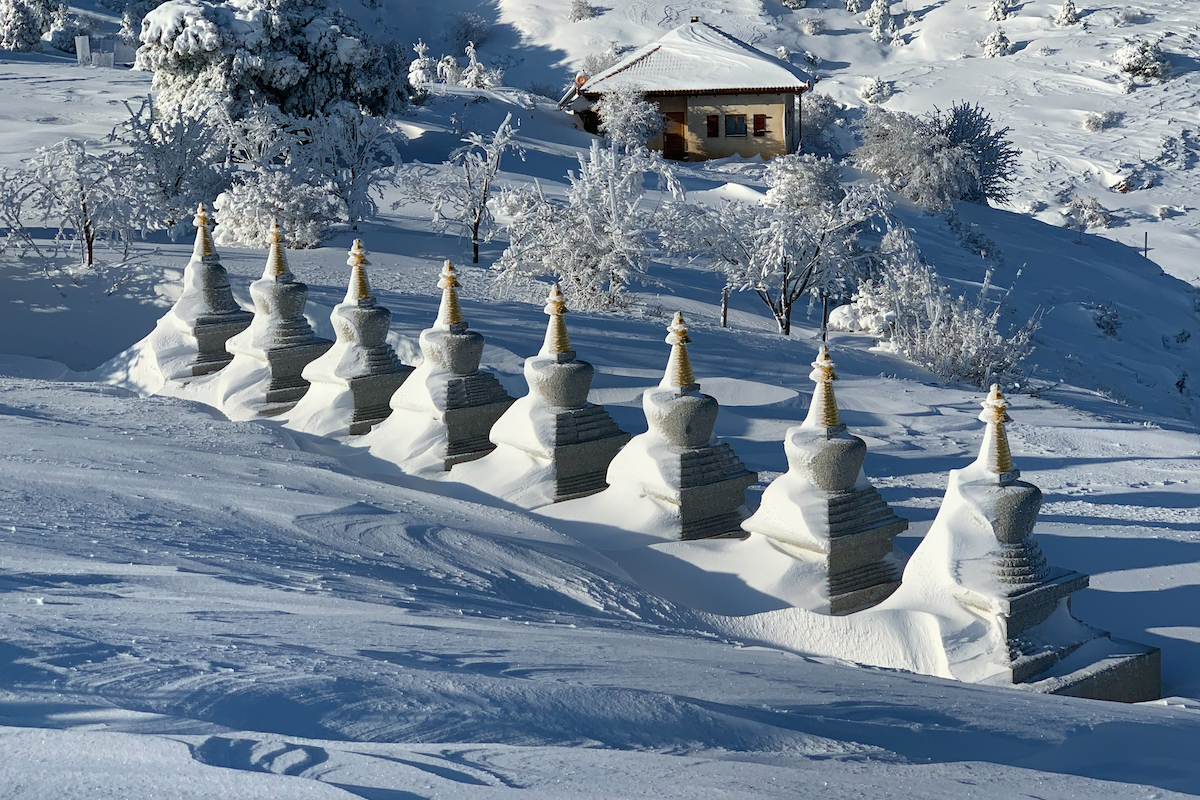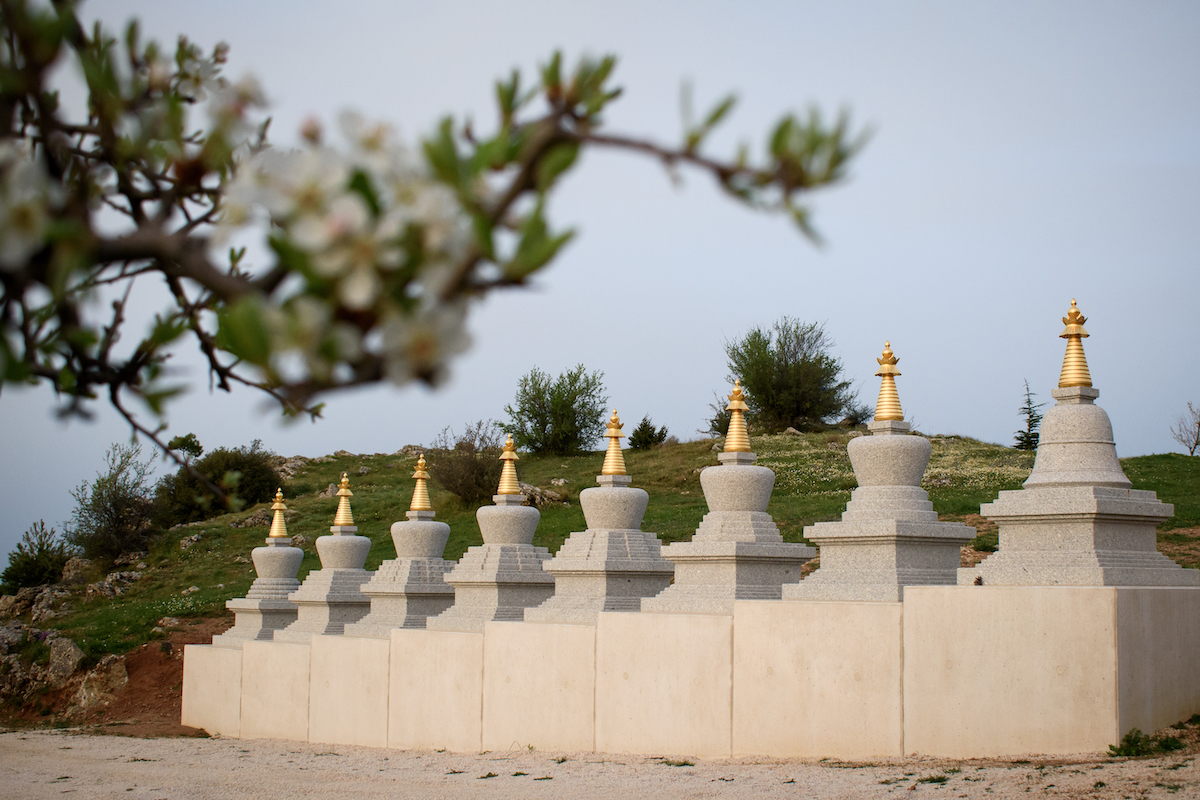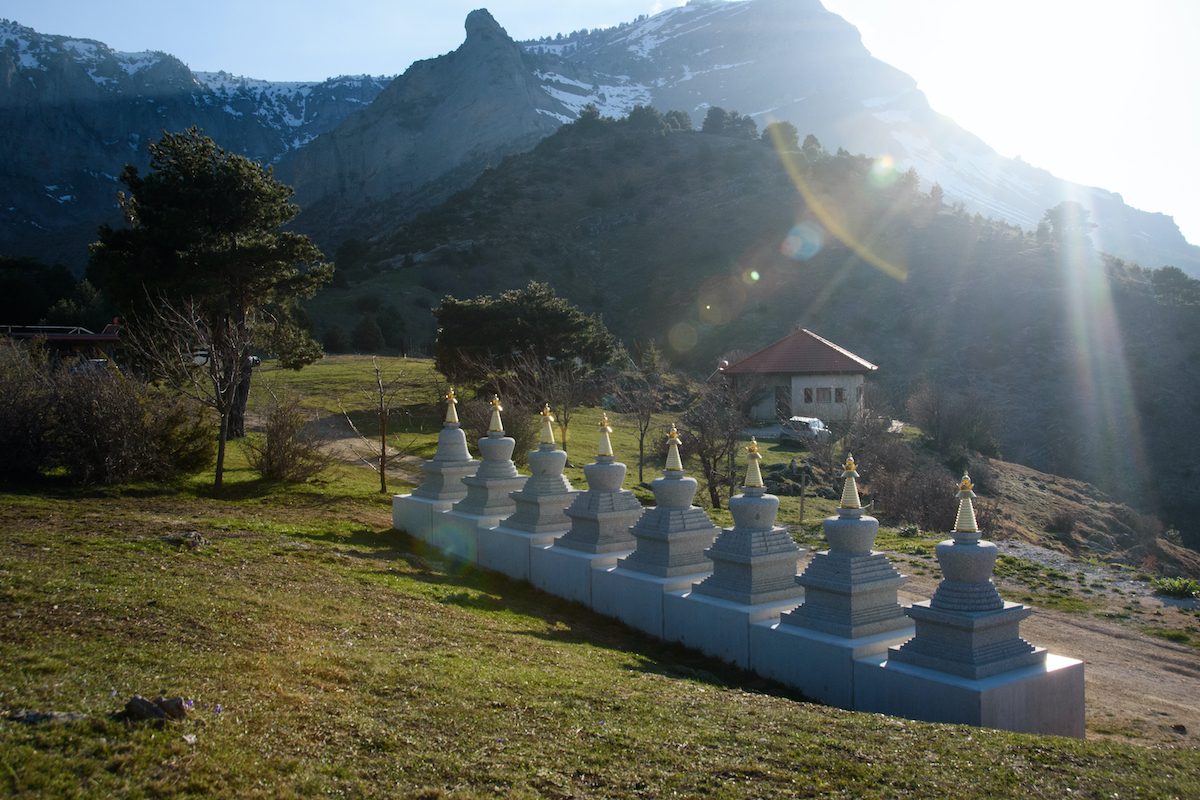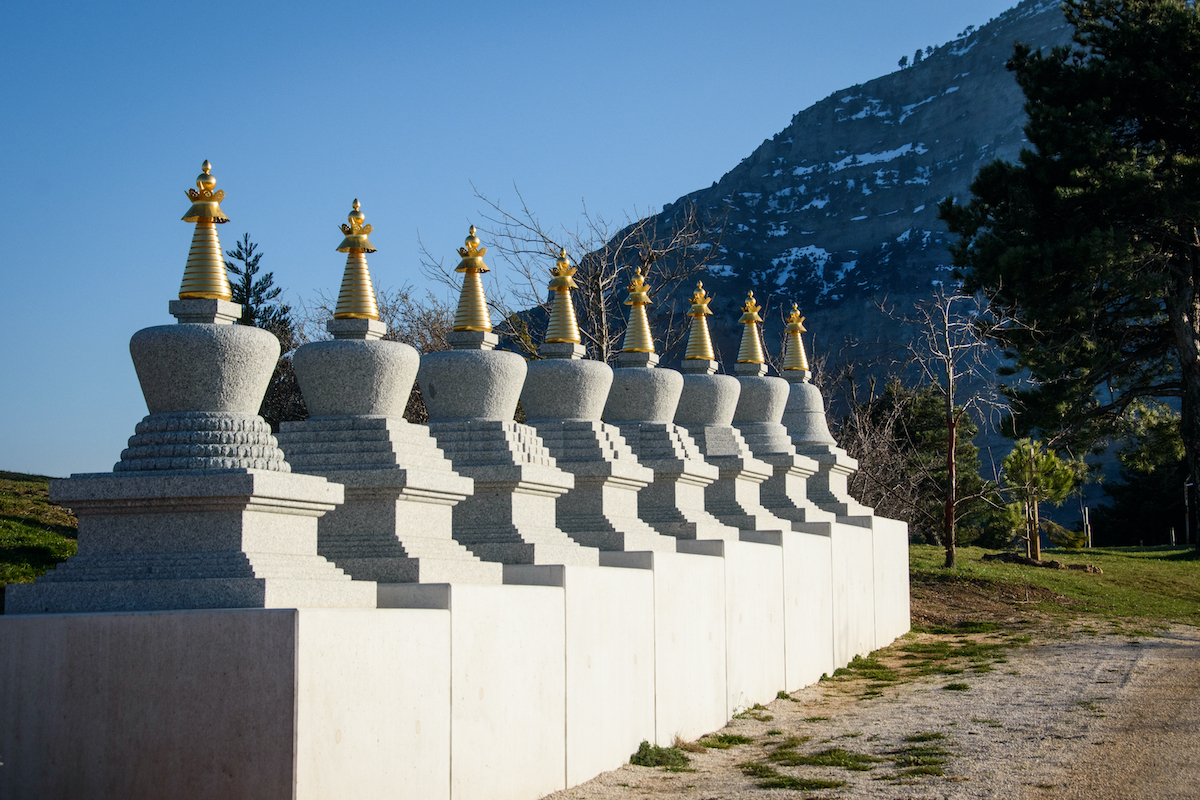The year 2017 was a very auspicious one for Karma Berchen Ling and its International Sangha: Under the spiritual guidance of Lama Chogdrup Dorje, we built all 8 non-tantric stupas in one place.
Everyone was invited to participate in preparation, construction and inauguration – and to share the blessing.
Many friends from many different countries came to help and to enjoy. Lama Chogdrub Dorje involved everybody in the blessing of the Tsatsas and Mandalas and in filling the Stupas, giving generously blissful teachings
The Meaning of the 8 Stupas
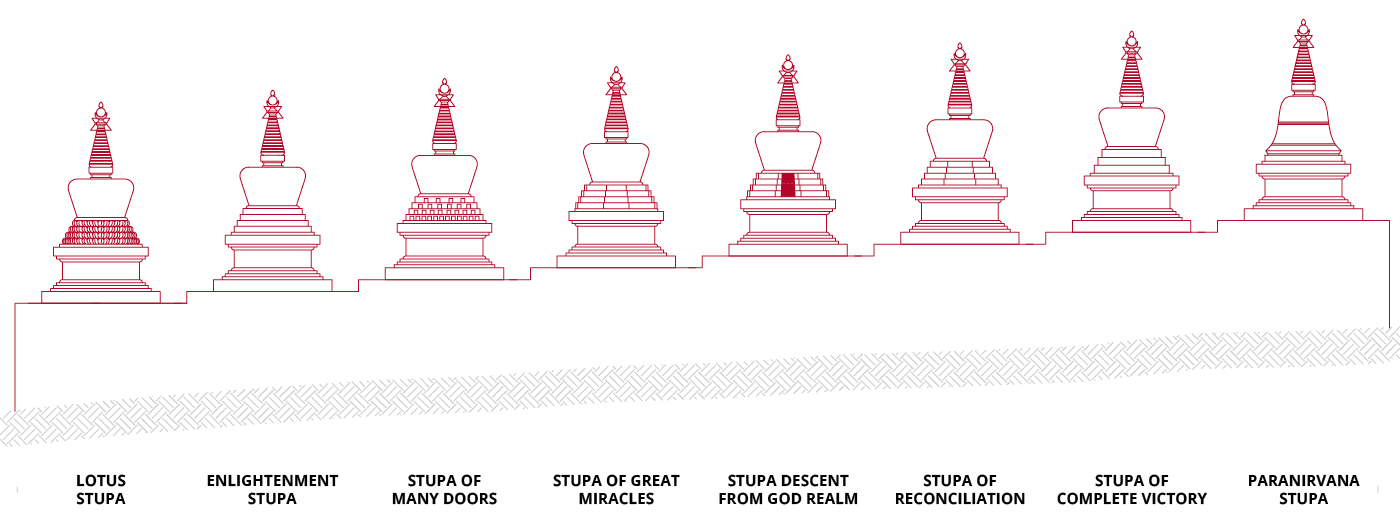
Stupas (Tib. chorten) are Buddhist monuments, which express the nature of mind in a perfect way. They symbolize not only the Buddha state of “body, speech and mind inseparable” but also the entire path through the ten Bodhisattva levels until full enlightenment. Translated from the Tibetan “cho” means gifts and “rten” foundation; therefore, a stupa is the foundation or perfect place for offering gifts to enlightenment. This leads to positive imprints in one’s mind – the one who experiences everything, and will lead to liberation and enlightenment.
The stupa is a traditional architectural structure, filled with relics and written mantras, which shows the harmony and perfection of all universal principles and invites to partake in the development and endless possibilities of the human mind.
Basically, one can find descriptions of eight different types of stupas in the Sutras, the direct teachings of the Buddha. They refer to important events in the life of Buddha Shakyamuni, like his birth, his enlightenment, his teachings and his death. The first stupas of this kind were built at different places in India and today’s Nepal according to these events and became holy sites.
Later, the tradition of the so-called “Tathagata Stupas of the Eight Secret Places” came to Tibet. At some Tibetan monasteries you still find all eight stupas in a row on top of an enclosing wall, counting 108 or even 1,080 stupas all together.
In Europe, all eight stupas built together are very rare to find. For example, one row is located in France (Montchardon) and since 2017, a beautiful set crowns Karma Berchen Ling.
The eight stupas create a strong protective field which can keep away negative forces. Built at the entrance, this “wall of stupas” not only reminds us of the deeds of Buddha but also protects the retreat place outwardly.

